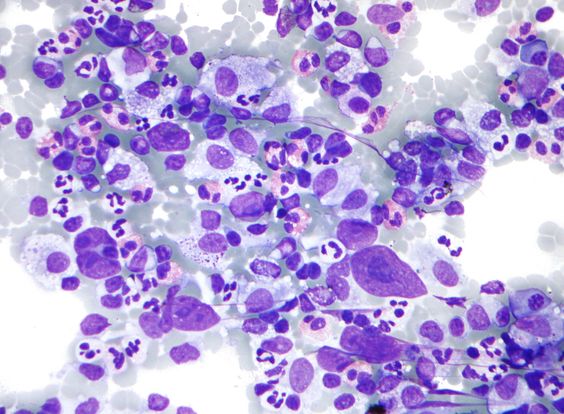Introduction
Hodgkin lymphoma is a type of cancer that affects the lymphatic system, a crucial part of the body's immune system. It arises when lymphocytes, a type of white blood cell, grow abnormally and spread beyond the lymph nodes. This can lead to a range of symptoms and potentially life-threatening complications if left untreated.

This comprehensive guide delves into the intricacies of Hodgkin lymphoma, exploring its symptoms, diagnosis, causes, and treatment options. By understanding the disease, individuals can empower themselves to seek timely medical attention and navigate their healthcare journey effectively.
Symptoms of Hodgkin Lymphoma
Hodgkin lymphoma often presents with noticeable symptoms, making early detection possible. The most common symptom is painless swelling of the lymph nodes in the neck, armpits, or groin. These enlarged lymph nodes may feel rubbery and firm to the touch. Other common symptoms include:
- Persistent fatigue: Feeling constantly tired and lacking energy, even after adequate rest.
- Unexplained fever: Experiencing recurrent episodes of fever without any clear cause, such as an infection.
- Night sweats: Profuse sweating during the night, often soaking through clothing and bedding.
- Unexplained weight loss: Losing a significant amount of weight without any changes in diet or exercise habits.
- Itching: Experiencing persistent itching, which can affect various parts of the body.
Diagnosis of Hodgkin Lymphoma
Diagnosing Hodgkin lymphoma involves a thorough medical evaluation and a series of tests. The initial step typically involves a physical examination, during which your doctor will carefully examine your lymph nodes, assess your overall health, and inquire about your medical history.
To confirm the diagnosis, a biopsy is necessary. This involves surgically removing a small sample of the affected lymph node and examining it under a microscope to identify the presence of cancerous cells. Additional tests may include:
- Blood tests: To evaluate your blood cell counts and check for abnormalities.
- Imaging scans: Such as CT scans, PET scans, or MRI scans, to visualize the extent of the disease and assess lymph node involvement.
- Bone marrow biopsy: To determine if the lymphoma has spread to the bone marrow.
Causes and Risk Factors
The exact causes of Hodgkin lymphoma are not fully understood, but certain factors can increase the risk of developing the disease. These include:
- Weakened immune system: Individuals with compromised immune systems, such as those with HIV or those who have undergone organ transplantation, are at a higher risk.
- Epstein-Barr virus (EBV): Infection with EBV, the virus that causes infectious mononucleosis, has been linked to an increased risk of Hodgkin lymphoma.
- Family history: Having a close relative with Hodgkin lymphoma may slightly increase your risk.
- Age: Hodgkin lymphoma can occur at any age, but it is most commonly diagnosed in young adults between the ages of 15 and 35 and in adults over 55.
Treatment Options
The treatment for Hodgkin lymphoma depends on several factors, including the stage of the disease, the individual's overall health, and their personal preferences. Treatment options typically include:
- Chemotherapy: The use of powerful drugs to kill cancer cells.
- Radiation therapy: High-energy rays are used to target and destroy cancerous cells.
- Stem cell transplant: Replacing damaged bone marrow with healthy stem cells.
- Immunotherapy: Drugs that stimulate the immune system to fight cancer cells.
- Targeted therapy: Medications that specifically target certain molecules involved in cancer cell growth.
Treatment plans are often tailored to the individual patient's needs and may involve a combination of these approaches.

.jpg)